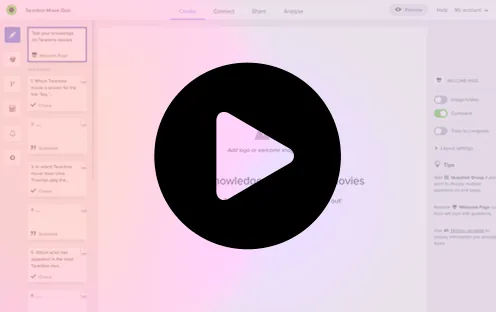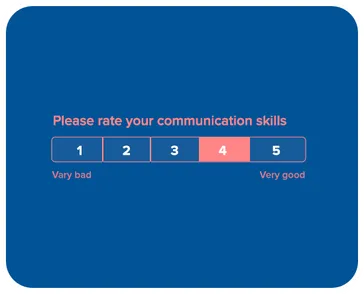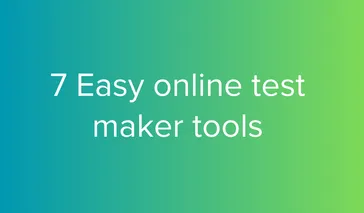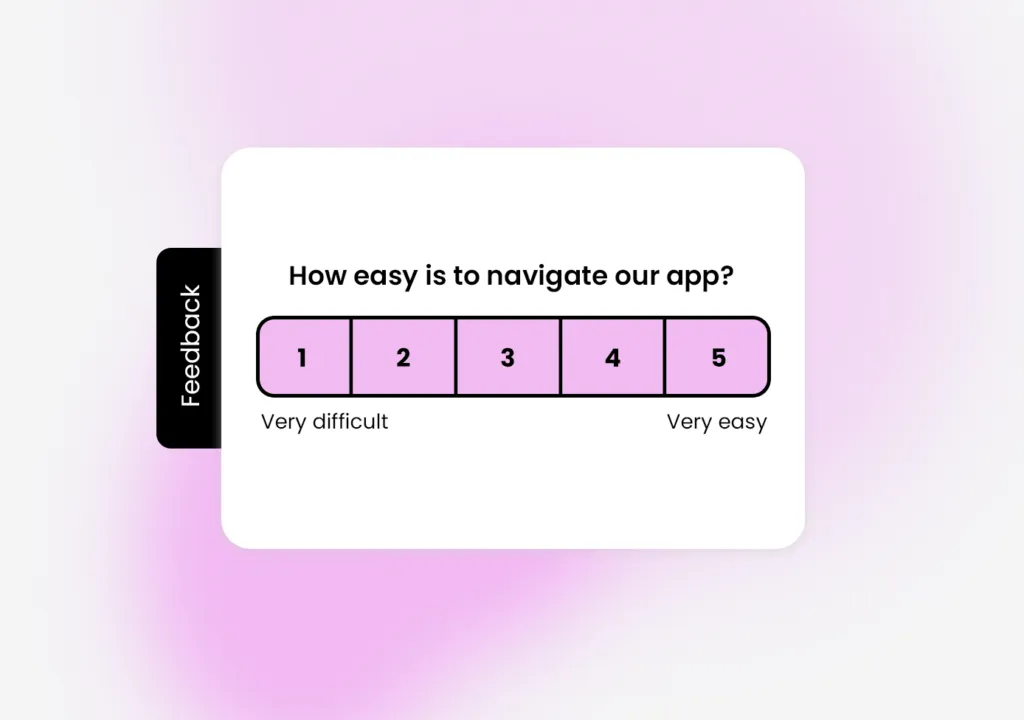
As businesses strive to stay competitive, they need rapid, actionable insights. Microsurveys offer a streamlined way to gather essential feedback with minimal disruption. By deploying brief, targeted surveys at key touchpoints, you can capture valuable insights from customers with ease. Whether you’re assessing initial impressions during onboarding, gauging satisfaction post-purchase, or gathering feedback on new features, microsurveys provide a nimble solution for understanding your customers’ needs and improving their experience. This guide will walk you through the optimal use of microsurveys, helping you harness their power to drive better decisions and enhance customer satisfaction.
What are Microsurveys?
Microsurveys are concise, targeted surveys typically consisting of one to five questions. Unlike traditional surveys, which can be lengthy and time-consuming, microsurveys are designed to be quick and easy for respondents, often taking just a few seconds to complete. This brevity increases response rates and ensures higher quality data, as participants are less likely to experience survey fatigue.
Microsurveys vs. Traditional Surveys
Surveys are invaluable tools for collecting data and gaining insights from target audiences. However, the effectiveness of a survey often depends on its length and complexity. This is where the distinction between traditional surveys and microsurveys becomes significant. Below is a comparison highlighting the key differences between these two survey types:
| Feature | Microsurveys | Traditional Surveys |
|---|---|---|
| Length | Short, usually 1-5 questions | Lengthy, often 10+ questions |
| Completion Time | Quick and easy to complete | Time-consuming to complete |
| Response Rates | Higher response rates | Lower response rates due to survey fatigue |
| Usage | Ideal for specific, actionable insights | Used for comprehensive data collection |
Microsurveys types and examples
Microsurveys for Customer Satisfaction Score
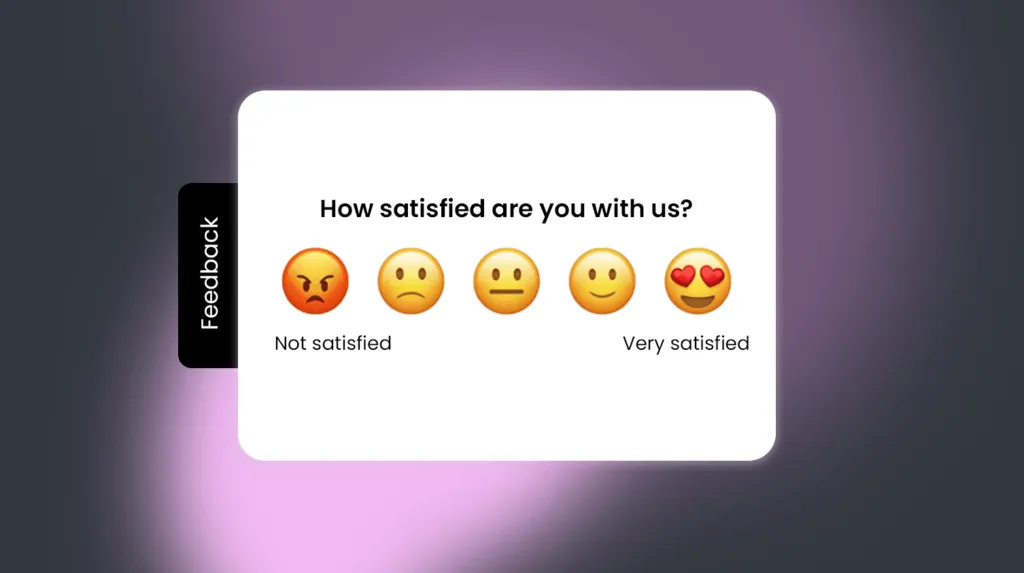
Key customer satisfaction surveys include:
- Net Promoter Score (NPS)
- Customer Satisfaction Score (CSAT)
- Customer Effort Score (CES)
- Product-Market Fit (PMF)
The Net Promoter Score (NPS) provides a broad view of customer loyalty. If respondents are willing to recommend your service to friends or family, they are likely committed and less prone to switch to competitors.
The Customer Satisfaction Score (CSAT) measures how satisfied customers are with a specific interaction, such as an in-app purchase, a resolved support ticket, or a new feature test. These surveys should be triggered by the specific event in question.
The Customer Effort Score (CES) reveals how easy or difficult it is for customers to complete certain tasks, offering valuable insights into the effectiveness of your customer service.
A Product-Market Fit (PMF) survey informs you about necessary product adjustments to better meet market needs and highlights what you are already doing well.
Microsurveys for Product Feature Prioritization
Collecting in-app feedback from engaged customers is crucial for this evolution. Ask respondents which features or functionalities they feel are missing. Users who interact with your product daily can provide creative insights that even the best product team might overlook.
A short feature microsurvey can inform product decisions with actionable data.
Microsurveys for Customer Insights Collection
Case studies, reviews, and testimonials enhance a successful marketing strategy. Online shoppers often rely on other customers’ feedback to make purchasing decisions.
Microsurveys are an excellent tool for gathering valuable data from existing customers to attract new ones. This information is more insightful than simply observing customer behavior.
Create a microsurvey with questions such as:
Which features do you enjoy most?
Which integrations do you find most valuable?
How has your revenue grown since using our product?
Microsurveys for Competitor Analysis
Questions like:
Why did you choose us over competitors?
Are you considering switching to a competitor?
What made you switch to our product instead of a competitor?
These questions help identify your unique selling propositions and advantages. Use a competitor analysis microsurvey to gain insights for your next marketing campaign.
Microsurveys for Customer Churn Research
Churn microsurveys are useful in two scenarios:
When a potential customer leaves your website without making a purchase or signing up. These surveys can be triggered by tracking mouse movement after visiting the pricing page.
When a customer is about to cancel a subscription. Understanding why customers churn can help you develop better strategies to foster relationships and increase loyalty.
When to run microsurveys
Microsurveys are highly versatile tools that can be strategically deployed at various stages of the customer journey to capture crucial insights. Here’s when to use them for maximum impact:
1. OnboardingPurpose: To understand new users’ initial impressions and experiences.
When to deploy: Trigger a microsurvey shortly after a user completes the onboarding process.
Benefits: Gain insights into the effectiveness of your onboarding process, identify potential friction points, and improve the user experience for new customers.
Purpose: To gauge customer satisfaction following a transaction.
When to Deploy: Initiate a microsurvey immediately after a purchase or transaction is completed.
Benefits: Collect feedback on the purchase experience, identify areas for improvement, and understand how satisfied customers are with their recent acquisition.
Purpose: To gather feedback on newly introduced features or updates.
When to Deploy: Launch a microsurvey soon after users have had the chance to interact with the new feature.
Benefits: Assess user reception and usability of new features, uncover any issues or suggestions, and prioritize future enhancements based on real user feedback.
Purpose: To evaluate the quality of customer support interactions.
When to Deploy: Send a microsurvey shortly after a support ticket is resolved or a customer service interaction concludes.
Benefits: Measure the effectiveness and satisfaction of your support team, identify areas where service can be improved, and ensure that customers are receiving the support they need.
Purpose: To gather feedback on specific in-app experiences or behaviors.
When to Deploy: Trigger microsurveys based on specific user actions or behaviors within the app.
Benefits: Collect real-time feedback on app usage, identify engagement patterns, and refine app features or user flows based on direct input.
Purpose: To understand reasons behind user churn or disengagement.
When to Deploy: Use microsurveys when a user is about to leave your website or cancel a subscription.
Benefits: Capture insights into why users are leaving, identify potential areas for improvement, and develop strategies to enhance retention and reduce churn.
Purpose: To gather feedback during different stages of product development. When to Deploy: Conduct microsurveys at various phases of development, such as during beta testing or after product updates.
Benefits: Obtain valuable user feedback to guide product improvements, validate new ideas, and ensure the product meets user needs and expectations.
Microsurveys Pros & Cons
Pros
High Response Rates: The brevity of microsurveys makes them less daunting, increasing the likelihood that respondents will complete them. This leads to higher participation and more reliable data.
Quick Insights: Microsurveys enable the collection of timely data, facilitating swift decision-making. You can quickly identify and address issues or capitalize on positive feedback.
Focused Feedback: These surveys allow you to zero in on specific areas that need improvement, providing targeted insights. This precision helps in making more effective and relevant changes.
Improved User Experience: Because microsurveys are quick and easy to complete, they cause minimal disruption to the user experience, leading to more genuine responses.
Cost-Effective: Shorter surveys generally require fewer resources to design, distribute, and analyze, making them a cost-effective feedback tool.
Cons
Limited Data: With fewer questions, microsurveys may not capture as comprehensive data as longer surveys. This limitation can result in missing out on broader insights.
Context Dependency: The responses might lack depth and context, especially if not supplemented with additional data sources. This can make it challenging to fully understand the reasons behind certain feedback.
Risk of Oversimplification: Important nuances may be overlooked because microsurveys focus on specific areas rather than the overall picture.
Potential for Misinterpretation: Short responses can sometimes be ambiguous, making it harder to interpret the exact sentiment or issue being raised.
Survey Fatigue: If overused, even brief microsurveys can contribute to survey fatigue, leading to lower response rates over time.
Wrapping Up
Microsurveys are a powerful tool for businesses seeking to enhance customer experience and make data-driven decisions. Companies can achieve higher response rates and gather valuable insights by keeping surveys short, relevant, and engaging. Platforms like Responsly make it easy to create and deploy these surveys, ensuring you stay connected with your audience’s needs and preferences.
Embrace microsurveys as part of your feedback strategy and watch your customer satisfaction and business growth soar.
